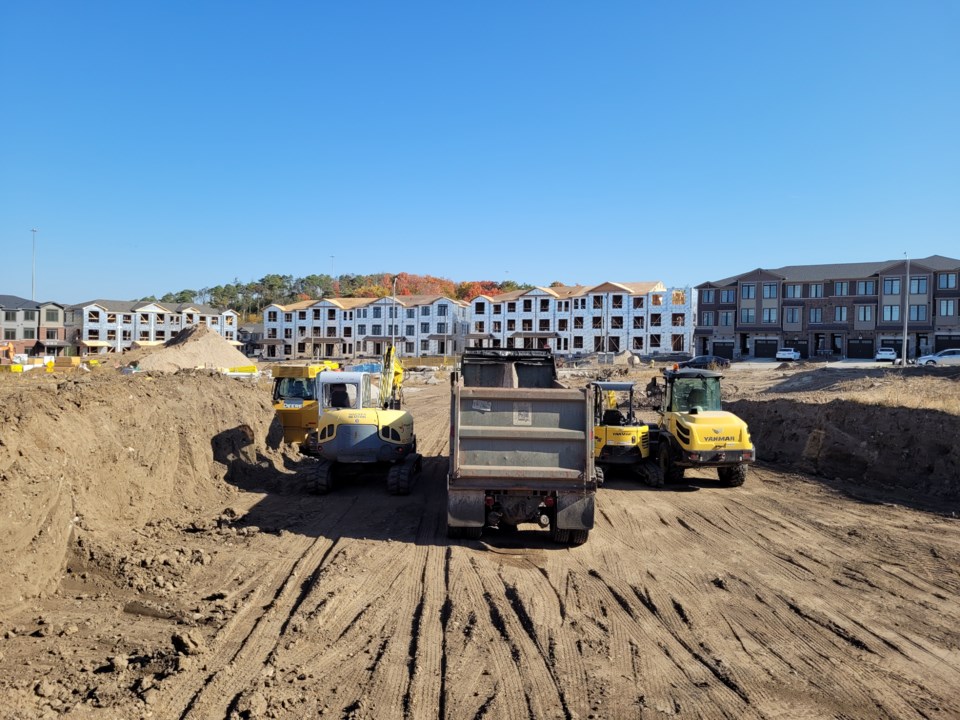The Province has essentially overturned a Halton growth plan approved earlier this year by regional council and is now directing the municipality to expand its urban boundary and build on farmland in Milton and Halton Hills.
The overhauled version of Regional Official Plan Amendment (ROPA) 49 was recently approved by the Minister of Municipal Affairs and Housing, who made 45 modifications to the document.
According to Halton staff, the most significant change is the addition of 3,350 net hectares of new urban land for development, with almost 2,000 hectares of that for residential and the balance for employment growth.
This expansion would see the loss of approximately 3,200 hectares of prime agricultural land, which Halton Director of Planning Services Curt Benson said equates to 10 per cent of the total prime agricultural area in the region.
The original ROPA 49 approved by regional council directed growth away from the farmland and kept it within the approved urban boundary up to 2041. The plan also specified that growth between 2041 and 2051 would follow a clear framework and be subject to a future Official Plan amendment.
The plan revised and approved by the minister extends the growth timeframe out to 2051 and provides a new distribution of growth to the four local municipalities.

Although the minister’s decision is final and not subject to appeal, regional council is letting its feelings about the situation be known. The local politicians passed a motion last week directing Regional Chair Gary Carr to write to the Province expressing council’s concerns with the changes made.
“While we don’t have an appeal right, I do think it’s important for us to state we do have concerns,” said Oakville Councillor Tom Adams, who brought the motion forth.
The resolution was seconded by Halton Hills Councillor Jane Fogal, who expressed her dismay with the changes made to the plan by the Province.
“Our whole Official Plan just became a minister’s zoning order,” she said, referring to a mechanism that allows the Province to override municipal planning decisions.
“What this does to our democracy, our whole thing about public input - everybody’s got to ask, why are we bothering?”
Some local residents are mobilizing to oppose the decision, with Halton Hills Climate Action encouraging everyone to phone the minister and Premier Doug Ford to raise their concerns.
An email distributed by the Climate Acton team says it’s “steaming” about the Province’s actions in recent days, calling its ROPA 49 decision, proposed More Home Built Faster Act (Bill 23) and plan to build on greenbelt lands “draconian measures.”
Citizens’ coalition Stop Sprawl Halton (SSH), which campaigned strongly in favour of preserving farmland during the ROPA 49 process, is also condemning the Province’s decision to overhaul the plan approved by council.
“There is no defensible reason for the government to overrule what the elected council decided,” SSH asserted on its Facebook page. “It meets all the population targets and follows all the rules.”
Looking at the finer details of the approved ROPA 49, it adds:
- 1,040 hectares of residential land south of Georgetown and 480 hectares of employment land near the Halton Hills border with Milton
- 730 hectares for residential development south of Milton and 930 hectares for employment growth to the east in Milton
- 60 hectares for residential growth north of Hwy. 407 in Oakville, outside the greenbelt area
- 90 hectares for residential development in three pockets of north Aldershot in Burlington.
The revised plan also converts 140 hectares of employment lands in Oakville and Burlington to community land, meaning it could be used for residential or mixed use development.
Further complicating the future of growth in the community is the Province’s More Homes Built Faster Act and related action plan, which propose many significant changes to a variety of growth-related legislation, with a goal of building 1.5 million homes across Ontario over the next decade.
Halton CAO Jane MacCaskill explained to council that the Province’s plan has identified proposed growth targets to 2031 for 29 municipalities across Ontario, including Burlington, Oakville and Milton.
“The target for the three Halton municipalities is 83,000 units over the next 10 years, which is 32,600 or 65 per cent more units than were planned,” she said, noting the majority of the growth is slated for Burlington and Oakville.
The Act also looks to eliminate Halton and other regions’ land use planning roles and reduce the amount of development charges that can be collected to help pay for growth - the latter of which could have “staggering” financial impacts for Halton and other high-growth municipalities, said MacCaskill.
The motion passed by council directs Carr to also express concerns about the bill in his letter to the Province, as will regional staff in its own communications.
